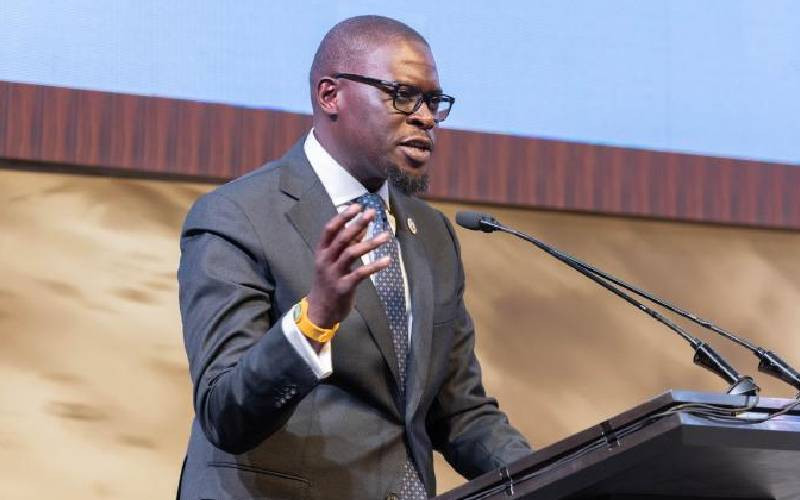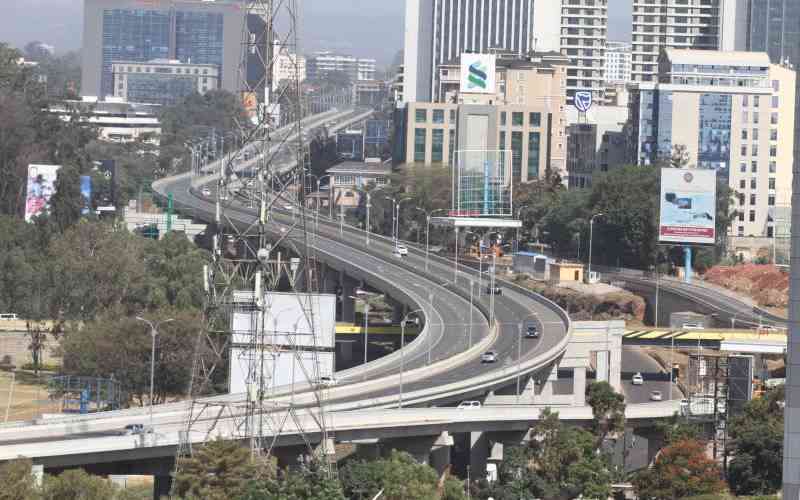By Karanja Njoroge
Nairobi City faces imminent closure if urgent measures are not taken to address the collapsed sewerage system.
Experts are warning that the sewer network built for Nairobi in 1961 to cater for just about one million people is on the verge of collapsing. The sewerage system is now bursting at the seams as it serves a population that is three times what is was meant to serve.
Dr Robert Ayisi, the city council’s director of health says the broken sewers pose a great health hazard.
“When the system breaks down and the waste spills over to roads, houses and other places, the result is disease outbreak because it mixes with water used for domestic use,” Mr Ayisi said.
He said it is even worse during rainy seasons as waste from broken sewers mix with that from pit latrines.
“The council tries its best but it is overwhelmed by the huge population. The lack personnel, inadequate finances, dilapidated health centres, and increased rural-urban migration makes it hard for us to offer quality services,” he said.
There are predictions that the systems will be clogged even more in the next eight years when the population of the city and the Nairobi Metropolis is expected to hit the 20 million mark by the year 2020.
Nairobi County currently has a population of four million people who live in the city while the wider Nairobi Metropolitan region comprising of 15 local authorities, is home to 6.6 million people.
The existing Nairobi sewer network, built in 1961 was meant to serve a population of less than one million and has a total length of about 163 Km and covers an area of about 208 square kilometres.
The sewer line is less than 30 per cent of the city’s total 696 square kilometers and only 20 per cent of the population is connected to the sewerage system.
A sewer system for the city was built in the late colonial period and the first waste water treatment plant was completed at Kariobangi in 1961, shortly before independence.
Sewer lines
A second waste water treatment plant was commissioned in 1980 in Dandora. The Dandora estate sewerage treatment plant’s expansion was completed in 1994, making it the second largest stabilisation pond plant in Africa.
But with the population explosion, which stands at five million during the day and four million at night, has made the situation worse.
Stay informed. Subscribe to our newsletter
The discharge of untreated wastewater continues which coupled with inadequate garbage collection and poor maintenance of sewer lines has caused clogging and overflowing.
As a result, the Kariobangi wastewater treatment plant, which is poorly maintained, has stopped functioning and the wastewater has been bypassing it without treatment to the Nairobi River.
It has a capacity of 32,000 cubic meters per day and uses the trickling filter technology.
The Dandora estate treatment plant in Ruai treats industrial and domestic sewage and has a capacity of 80, 000 cubic meters per day. It is the largest pond system in Africa, but further expansion has been hampered by encroachment and grabbing of its land.
According to Bosire Ogero, the Vice President of Commonwealth Association of Planners (CMA) the uncontrolled development and lack of expansion of the sewer line means the city will have to be closed down soon.
“The Nairobi Metropolitan growth strategy was last done in 1975 and it needs to be urgently updated and upgraded to cope up with the growing numbers. This must include the sewerage strategy,” Mr Ogero said.
He regretted that developers were flouting construction rules and in the process endangering the lives of city residents.
“Planners make provision for the sewer lines but developers come and build over them. The developers should respect the law otherwise the government should take the painful step of demolishing houses on sewer lines as an emergency measure,” Mr Ogero said.
Steve Oundo, the chairman of the Architectural Association of Kenya (AAK) concurs.
“The problem with Kenya is not lack of laws but impunity. People who have illegally acquired land meant for sewerage expansion are well connected unscrupulous crooks and quack contractors who are out to make quick money,” Mr Oundo who is also the chairman of the National Construction Authority said.
Infrastructure
He added, “Infrastructure development includes roads, water, electricity and sewerage development. Neglecting any of the four results in serious consequences. That’s why many people now rely on septic tanks for their waste management.”
Mr Ayasi is optimistic that the sewerage system in the city is set to improve as the government has embarked on a project to rehabilitate and expand the network infrastructure and treat wastewater.
The Sh4.5 billion project, known as the Nairobi Sewerage Improvement Project, is a component of the Nairobi Rivers Basin Programme and is jointly funded by the African Development Bank and the government.
Upon completion, the project will extend coverage of trunk sewers by 54 kilometres within Nairobi in areas currently not served by sewer lines.
The coverage areas include Ngong, Mathare and Kiu River basins. It is expected that 40 kilometres of reticulation lines will be laid in areas with new trunk lines in medium, low income and informal settlements.
There will be duplication of trunk sewer lines in places where the sewer lines capacity is either low or has been encroached. Currently, there are 178,099 connections to the existing sewerage network.
Malaquen Milgo, the Athi Water Services Board (ASWB) chief executive said the three-year project’s objective is to expand access to sewerage services for the city’s population from 40 per cent currently to 59 per cent by the year 2014 for improved public health and sustainable environment.
Informal settlements
“The project will include rehabilitation and expansion of treatment plants, old trunk lines and laying new ones in some areas with secondary and tertiary reticulation.
Community sanitation has been included in the informal settlements and low income areas where trunk lines will be installed,” said Mr Milgo.
He added that informal settlements, which constitute 40 per cent to 60 per cent of the population in the city, suffer from poor water and sanitation service provision.
The residents in the informal settlements are predominantly low-income earners where 56 per cent earn their livelihood through the informal sector on small-scale business located within the area or in the city.
It is expected that the project will have significant positive impacts on public health and quality of life among the population living along the Nairobi River Basin,” he said.
The three main components of the project are wastewater infrastructure, which covers rehabilitation and expansion of the sewerage system, sanitation, hygiene and social environmental support, and institutional development support.
The city council is also working on three projects, which are expected to change the overall environment in the city.
Master Plan
The council is updating the Solid Waste Management 1998 Master Plan for Nairobi with the assistance of the Japanese International Cooperation Agency (JICA).
The project was started in October, 2009 and is slated for completion in August 2010. The Master Plan will provide clear directions to be taken by the Council in effectively solving the persistent garbage problem in Nairobi.
Coupled with this is the formulation of an integrated Solid Waste Management Plan. Sponsored by the United Nations Environment Programme (UNEP), its objective is to provide a long-term plan for solid waste management. It will be implemented alongside the Master Plan being updated with the help of JICA.
“With 2000 metric tons of waste produced daily in Nairobi, 60 per cent of this being organic, the department wants to adopt the 4R (reduce, re-use, recycle and recover) strategy to address the issue,” Mr Ayisi said.
Mr Milgo said the sewerage system development targets Industrial Area, Ruai, Njiru, Kamukunji, Eastleigh, Embakasi Garrison and Jomo Kenyatta International Airport (JKIA).
Other areas include the Arboretum, Karura forest, Kasarani, Ruiru, Juja, Dagoretti Corner, Ngong road and Ongata Rongai.
 The Standard Group Plc is a
multi-media organization with investments in media platforms spanning newspaper
print operations, television, radio broadcasting, digital and online services. The
Standard Group is recognized as a leading multi-media house in Kenya with a key
influence in matters of national and international interest.
The Standard Group Plc is a
multi-media organization with investments in media platforms spanning newspaper
print operations, television, radio broadcasting, digital and online services. The
Standard Group is recognized as a leading multi-media house in Kenya with a key
influence in matters of national and international interest.
 The Standard Group Plc is a
multi-media organization with investments in media platforms spanning newspaper
print operations, television, radio broadcasting, digital and online services. The
Standard Group is recognized as a leading multi-media house in Kenya with a key
influence in matters of national and international interest.
The Standard Group Plc is a
multi-media organization with investments in media platforms spanning newspaper
print operations, television, radio broadcasting, digital and online services. The
Standard Group is recognized as a leading multi-media house in Kenya with a key
influence in matters of national and international interest.









